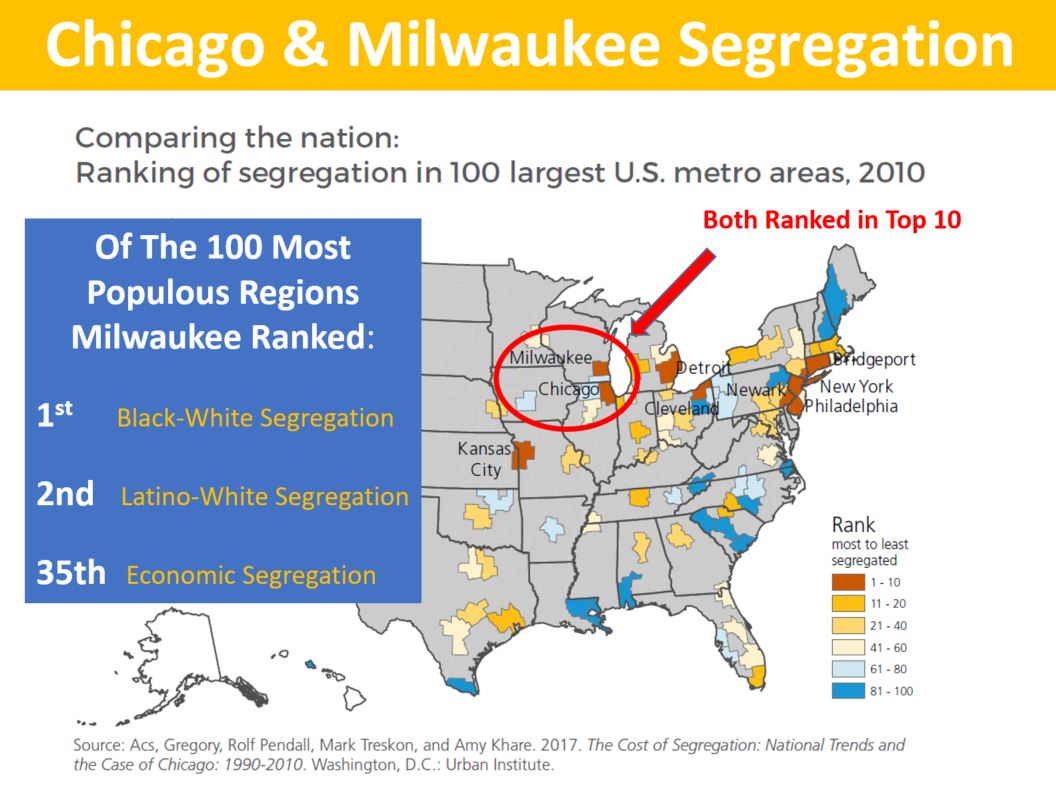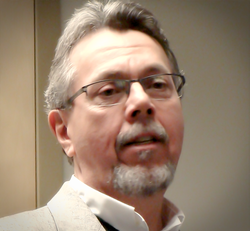Either we act out of fear and watch as another generation suffers the sins of racism and discrimination or, we act out of faith and a belief in generosity and abundance and watch as all prosper when discrimination is reduced. While accurate and poignant, the words in the six phrases below were written in 1979 – nearly 40 years ago – in a Pastoral Letter on Racism which was adopted at the time by the United States Catholic Bishops. These words ring as true today as they did when originally written during generations past.
I’ve written before on the sins of discrimination in our region and don’t need to go into it again here. What I do want to talk about is what would the region look like if we were to eradicate discrimination and racism? A recent study by the Chicago Metropolitan Planning Council looked at the Cost of Segregation which if reversed in the Chicago region, would save hundreds of lives and billions of dollars – each year. What we see in this particular study is that Chicago and Milwaukee are quite similar. Both are ranked in the top five metro areas in terms of racial and economic segregation. The following numbers reflect savings in the Chicago region based upon the study, but we must assume that the Milwaukee region would reap similar benefits if the regional gap between white and African-American economic segregation was brought down to the national median. Savings would include:
What this and many other studies shows is that when racial and economic discrimination is reduced (or eliminated) everyone benefits. The region as a whole would realize increased income, saved lives and see new opportunities open up. We have built racial and economic discrimination into our institutional structures out of fear. Yet, if discrimination was reduced, everyone would be better off. So, why don’t we do this? Why do we see a 40-year-old document describe the effects of discrimination so accurately that it could have been written today? I believe we do so because of a false sense of scarcity. We have completely bought into the idea that our economy thrives on a zero-sum equation: if someone else “wins” - I will “lose”. And it is this sense of win-lose that drives us to support the subtle racism inherent in our institutions and to ignore the pleas and plans of many to end discrimination. In the gospel stories, Jesus wanted to feed the crowd of thousands with the food that was on hand. His followers saw only scarcity in the five loaves and two fishes they found. Jesus had another idea. He saw the world as one of generosity and abundance. He asked all to sit and to share what was available. All were fed and 12 baskets were filled with the leftovers. I think this analogy holds true about eliminating discrimination. Either we act out of fear and watch as another generation suffers the sins of racism and discrimination or, we act out of faith and a belief in generosity and abundance and watch as all prosper when discrimination is reduced. That is the choice in front of us. Which do you choose?
0 Comments
Your comment will be posted after it is approved.
Leave a Reply. |
AuthorMichael Soika has been a community activist for more than 30 years working on issues of social and economic justice. His work for justice is anchored by his spiritual formation first as a Catholic and now as a Quaker. Archives
June 2018
Categories |


 RSS Feed
RSS Feed